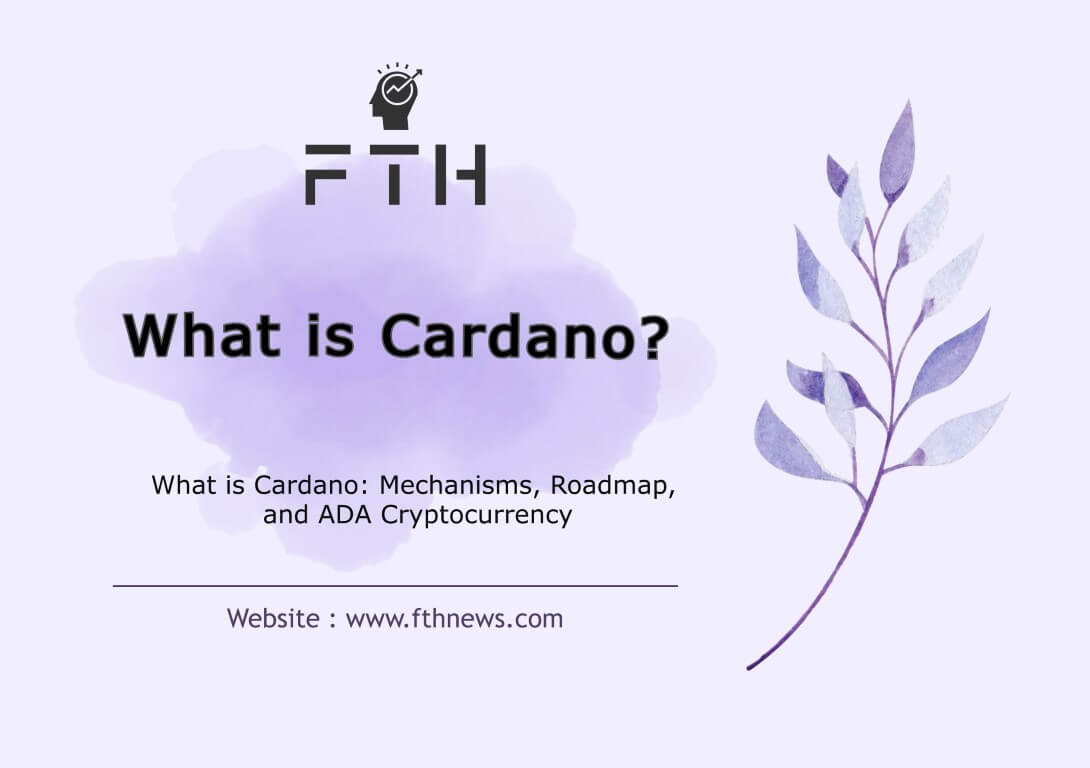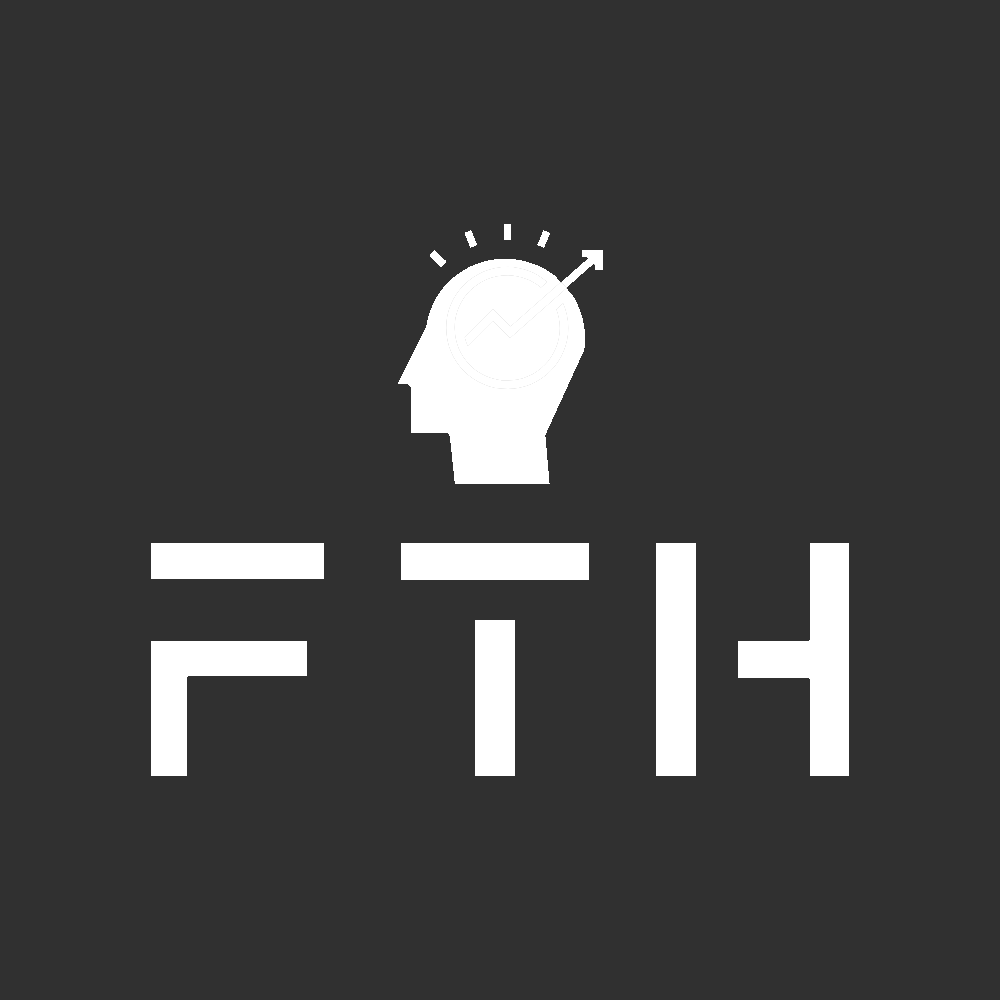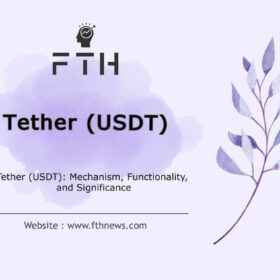
What is Cardano: Mechanisms, Roadmap, and ADA Cryptocurrency
Cardano is a blockchain network built on the foundation of Proof of Stake (POS). Dedicated to addressing scalability issues, Cardano positions itself as a third-generation blockchain and stands as a formidable contender against the Ethereum 2 network. Despite its ambitious goals, Cardano faced challenges in achieving scalability until the release of the Vasil update in 2022, marking a significant stride forward. Post-update, the Cardano network experienced a reduction in transaction processing times, bringing it closer to its intended objectives.
The Cardano project, coupled with its native cryptocurrency ADA, has generated considerable excitement within the crypto community since its inception in 2015. Spearheaded by the IOHK technology company, founded by Charles Hoskinson, Cardano aims to redefine the landscape of blockchain technology. But what precisely is Cardano, and what role does it play? Moreover, what strategic plans are outlined in its extensive roadmap for the future? Let’s delve into the intricacies of Cardano to unveil its significance in the world of cryptocurrencies.
What is Cardano?
Cardano emerges as an open-source, decentralized blockchain project specifically crafted to streamline peer-to-peer transactions. This innovative platform boasts a meticulously designed structure and architecture that enables the seamless implementation of smart contracts. This not only enhances compatibility and scalability but also ensures robust security measures are in place.
Functioning as a versatile blockchain, Cardano stands out for its foundation in academic research, a testament to its commitment to quality and reliability. The project is actively developed by a diverse team comprising engineers, mathematicians, scientists, and business professionals. Employing a scientific approach in the development of its operating system, Cardano’s creators prioritize three key principles: security, scalability, and interoperability.
In simpler terms, Cardano aspires to compete with traditional financial systems, positioning itself as a robust payment network akin to industry giants like Visa. At the core of its mission is the resolution of scalability challenges, a critical step in its pursuit to redefine the landscape of peer-to-peer transactions.
Cardano History
The Cardano project commenced its journey in 2015, marking the genesis of a transformative vision. In 2018, the Cardano developer team achieved a significant milestone by raising $63 million during its Initial Coin Offering (ICO). This fundraising method, integral to digital currency development companies, propelled the project forward. The Cardano blockchain, in its early days, garnered an astounding $6 billion in the first three months of its ICO.
Founder of Cardano
Charles Hoskinson, a luminary in the digital currency realm, is a foundational figure in the creation of Cardano. Notably, he is one of the founders of BitShares and Ethereum, bringing a wealth of expertise to the world of digital currencies.
Serving as the CEO of IOHK (Input Output Hong Kong) and director of the Bitcoin Education Project, Charles played a pivotal role in the development of Cardano. His departure from the Ethereum Foundation, fueled by disagreements over its non-profit nature, led to the initiation of the IOHK project in collaboration with Jeremy Wood.
In subsequent years, Charles Hoskinson and IOHK directed significant resources toward research labs at the University of Edinburgh and the Tokyo Institute of Technology, with a focus on active blockchain technology. In 2020, Charles initiated a groundbreaking research project on blockchain technology at the University of Wyoming.
The Cardano Foundation, based in Switzerland, played a central role in developing the Cardano project in cooperation with two key entities, IOHK and Emurgo.
Purpose of Creating Cardano
Cardano’s overarching purpose is to revolutionize the blockchain landscape. The project aims to design a new blockchain capable of processing transactions more efficiently, rapidly, and cost-effectively than its predecessors. A key distinction lies in the meticulous crafting and coding of an entirely original blockchain, setting ADA apart from projects that replicate existing code.
The narrative of Cardano’s history unfolds with visionary leadership, strategic collaborations, and an unwavering commitment to pushing the boundaries of blockchain technology. As ADA continues to progress, it remains poised to redefine decentralized finance and establish new benchmarks in blockchain innovation.
How Does Cardano Work?
positioning itself as a “third generation” blockchain, Cardano sets out to address the scalability challenges encountered by the first generation (Bitcoin) and the second generation (Ethereum) blockchains. Advocates of this classification argue that earlier blockchain iterations face inherent limitations in their processing capacities, rendering them inefficient for widespread global use.
Drawing a parallel with the widely accepted Visa network in the realm of financial transactions, Cardano asserts that Visa processes an average of 1,736 transactions per second, with the capability to manage up to 24,000 transactions. In its initial stages, the Cardano network achieved 257 transactions per second, surpassing the transaction capabilities of Bitcoin (4 transactions per second) and Ethereum (20 transactions per second).
To enhance its processing speed, ADA employs solutions like Hydra, a second-layer protocol. With Hydra in play, Cardano’s processing speed is projected to reach an impressive two million transactions per second. The innovative concept of Hydra Heads, representing participants in the Hydra network who validate transactions, allows for scalability. Each Hydra Head can process 1000 transactions per second, and with an increasing number of pools, scalability further amplifies. If the number of pools reaches 1000, Cardano could process a staggering one million transactions per second, ultimately culminating in a capacity for two million transactions per second.
Cardano’s ambition to liken itself to the Visa network stems from its vision of becoming a global platform for financial transactions in the future.
In its pursuit of improved performance, Cardano employs several key strategies. The Proof of Stake (PoS) consensus mechanism, known as Ouroboros, stands out as a significant pillar. Ouroboros not only reduces energy consumption in comparison to Proof of Work (PoW) but also provides verifiable security guarantees.
Smart Contracts in Cardano: Unlocking Decentralized Possibilities
Cardano stands out in the blockchain landscape by incorporating smart contract technology, empowering the network to establish self-executing agreements without the need for professional oversight.
The introduction of smart contracts to the Cardano network came to fruition through the Alonzo hard fork on September 12, 2021 (21 September 1400). This pivotal update paved the way for the network to support decentralized applications (DApps). With the launch of the Gogen mainnet, users anticipate a surge in the release of DApps on the Cardano platform.
The upcoming wave of Cardano decentralized applications, built on the Haskell language, will include programs like Plutus (Cardano’s smart contract platform) and Marlowe (Cardano’s decentralized finance platform). Leveraging Haskell makes it remarkably straightforward for developers to write and deploy decentralized applications on the Cardano network.
Cardano Network Services Unleashed
Since the Alonzo hard fork, the Cardano network has witnessed the launch of numerous decentralized programs. Beyond the creation and utilization of decentralized applications, users and developers can tap into a range of services offered by the Cardano network:
Creation of Peer-to-Peer Tokens (NFTs): The Cardano network facilitates the seamless creation of non-fungible tokens (NFTs), enabling unique digital assets to be securely traded and managed.
Smart Contract Deployment: Users can leverage the smart contract capabilities of Cardano to bring programmable agreements to life, enhancing the functionality and versatility of the network.
Participation in Governance Processes: The Cardano community is actively engaged in governance processes, involving activities such as creating proposals (CIPs), securing grants for new projects, and participating in voting for network development initiatives.
Creation of Staking Pools: Individuals can contribute to the Cardano network by establishing staking pools, becoming integral network nodes and contributing to the network’s overall security and decentralization.
ADA Cryptocurrency Staking: Users can stake their ADA cryptocurrency and earn rewards by delegating voting rights (Delegate) to network nodes. This process not only supports the network’s stability but also provides an avenue for stakeholders to earn passive income.
The integration of smart contracts into the Cardano network has not only unlocked a new era of decentralized applications but has also paved the way for a multitude of services, empowering users and developers to actively participate and contribute to the network’s growth and governance.
The Core Team Behind the Cardano Project
At the genesis of Cardano stands Charles Hoskinson, a luminary and one of the founders of Ethereum. The development and realization of the Cardano project, however, are attributed to the collaborative efforts of multiple companies. While numerous organizations contribute to the platform’s evolution, three entities stand out as the primary driving forces behind Cardano: the Cardano Foundation, IOHK, and Emurgo.
Cardano Foundation: The Cardano Foundation, headquartered in Zug, Switzerland, plays a pivotal role in the realm of blockchain and digital currencies. Established with a clear mission, the foundation is dedicated to standardizing, protecting, and promoting Cardano technology. In essence, it serves as a guardian and advocate for the principles and advancements of the Cardano ecosystem.
IOHK (Input Output Hong Kong): Co-founded by Charles Hoskinson and Jeremy Wood, IOHK is an organization with a laser focus on crafting technological solutions. Positioned as a driving force behind the Cardano project, IOHK’s overarching goal is to champion and enhance financial affairs through innovative technological interventions. Its involvement spans the creation and development of crucial components that propel the Cardano blockchain forward.
Emurgo: Emurgo emerges as a global entity committed to supporting developers, startups, and enterprises in their journey toward creating innovative blockchain solutions. Functioning as a catalyst for progress, Emurgo provides valuable resources and methods to nurture the development of blockchain-based applications. Its role in the Cardano project is instrumental in fostering an ecosystem conducive to innovation.
While the collaborative efforts of these organizations form the backbone of Cardano’s development, it is the synergy among the Cardano Foundation, IOHK, and Emurgo that propels the project forward. Together, they contribute to the vision and advancement of Cardano as a pioneering force in the world of blockchain and digital currencies.
Cardano Roadmap: Navigating the Future of Blockchain
In the ever-evolving landscape of blockchain technology, Cardano has charted its course through a comprehensive roadmap, comprising five distinct phases. Born in 2017, Cardano has distinguished itself by prioritizing development in its initial years. As of the latest update, Cardano is progressing through the Gauguin stage, with an eye on subsequent phases.
Byron:
Date: July 25, 2020
Objective: Establish the foundational architecture of the network and conduct essential tests to ensure proper functionality.
Shelley:
Date: July 29, 2020
Objective: Launch the Cardano mainnet and initiate the decentralization of the blockchain network.
Goguen:
Date: Ongoing, with initial implementation in March 2021
Objective: Introduce a smart contract platform, enabling the creation of decentralized applications (DApps).
Basho:
Objective: Implement scaling solutions to optimize the blockchain and enhance performance.
Date: Yet to be determined.
Voltaire:
Objective: Introduce treasury and voting systems, establishing an independent network.
Date: Yet to be determined.
While these stages represent a linear progression, many components within each phase run parallel to one another. Rigorous academic research and prototyping are integral to each stage, ensuring that every piece of open-source code aligns with predetermined specifications.
Despite occasional delays in roadmap milestones, Charles Hoskinson and the Cardano development team express confidence in their ability to fulfill commitments and usher in the next generation of Proof of Stake (PoS) blockchain protocols.
As of the current update, Cardano is situated in the Gauguin stage, marked by the pivotal Alonzo hard fork in September 2021 (21 September 1400). This update enabled the definition of smart contracts on the Cardano blockchain and the creation of decentralized programs within the network.
Subsequent to Alonzo, the Vasil hard fork, executed on September 27, 2022 , aimed to reduce transaction processing times and associated fees. Following Vasil, another hard fork within the Gauguin phase is anticipated, paving the way for the Cardano network to transition to the next roadmap phase, Basho.
The Basho phase emphasizes network optimization, improved scalability, and enhanced interoperability to support decentralized finance (DeFi) applications. Introduction of sidechains in Basho serves to alleviate pressure from the main Cardano chain, fostering better scalability and overall network security.
While an exact timeline for the initiation of the Basho update remains uncertain, projections suggest its commencement toward the end of 2022. Cardano’s roadmap underscores its commitment to advancing blockchain technology, with each phase building on the successes of the previous, shaping the future of decentralized ecosystems.
Cardano Collaborations: Nurturing Ecosystem Growth
As Cardano continues its journey in the blockchain space, collaboration with various projects and entities has played a pivotal role in strengthening its ecosystem and fostering decentralized finance (DeFi) adoption. Here are notable collaborations that showcase Cardano’s commitment to innovation and expansion:
1. EMURGO:
Investment: EMURGO injected $100 million into the Cardano ecosystem to bolster the adoption of DeFi and support further growth in decentralized finance. Strategic investments by EMURGO have been directed towards developing projects within the Cardano ecosystem.
Noteworthy Projects:
Adanian: A technology growth center based in Africa with a focus on nurturing Cardano startups.
Milkomeda: A Chinese initiative for Cardano communication and other layer 1 protocols.
ADAVERSE: A project dedicated to supporting African startups.
2. Chainlink:
Cooperation: The collaboration between Cardano and Chainlink is geared towards advancing Cardano’s smart contracts. This partnership involves the utilization of Chainlink oracles by Cardano, empowering developers to create smart contracts for DeFi applications on the Cardano network.
3. Coinfirm Foundation:
Collaboration: Coinfirm, a provider of solutions for legislation by blockchain analysis, has chosen Cardano to implement anti-money laundering (AML) and counter-financing of terrorism (CFT) analytics. This collaboration enhances the regulatory compliance features within the Cardano ecosystem.
4. dcSpark:
Project: dcSpark, specializing in distributed ledger technology (DLT), is developing the first sidechain project in the Cardano ecosystem named Milkomeda. This sidechain connects ADA to other blockchain networks and is compatible with the Ethereum Virtual Machine (EVM). The native token of this sidechain is Rapided Ada coin (wADA).
5. Orion:
Collaboration: IOHK, the parent company of the ADA blockchain, has partnered with the Orion protocol, establishing it as the first automated liquidity provider for ADA. This collaboration grants ADA access to various cryptocurrency markets, allowing users to access liquidity from centralized exchanges in a fully decentralized manner.
Beyond these collaborations, ADA founder Charles Hoskinson announced significant government contracts with Ethiopia and Tanzania. These contracts involve the implementation of blockchain infrastructure related to education and internet connectivity in these countries.
What is ADA? Cardano Cryptocurrency
ADA, the native cryptocurrency of the Cardano blockchain, derives its name from the renowned 19th-century mathematician Ada Lovelace. Functioning as the primary unit of value within the Cardano network, ADA plays a crucial role in facilitating transactions and various activities on the platform, akin to the role of ether (ETH) in the Ethereum network.
Here are key aspects of ADA:
1. Distribution:
- In its initial coin offering (ICO), 57.6% of all ADA coins were distributed, raising a substantial $62.2 million for the Cardano project.
2. Utility:
- ADA serves as the medium for transactions within the Cardano network, functioning similarly to other native tokens on blockchain platforms like Ethereum.
3. Staking:
- ADA holders have the opportunity to earn rewards by participating in Cardano’s staking mechanism. Staking involves depositing ADA into Cardano pools, contributing to the network’s security and decentralization. Platforms like Binance offer Cardano staking options through Binance Earn, providing ADA holders with avenues to earn passive income.
4. Maximum Supply:
- The total maximum supply of ADA is capped at 45 billion coins, contributing to its scarcity and potential long-term value.
ADA, with its unique features and utility within the ADA ecosystem, plays a pivotal role in the network’s functionality and growth. As the ADA project advances through its roadmap, ADA continues to be a focal point for users and investors participating in the Cardano blockchain.
Cardano’s proactive engagement in diverse collaborations underscores its dedication to fostering a robust and globally impactful blockchain ecosystem, extending its influence in both financial and governmental spheres.
ADA Digital Currency: Multi-Faceted Utility in the Cardano Network
Beyond serving as a straightforward medium of value transfer, ADA, the native cryptocurrency of the Cardano blockchain, encompasses a range of uses that contribute to the network’s functionality and ecosystem dynamics:
Transfer of Value:
ADA can be utilized as a means of transferring value within the Cardano network, similar to how traditional cash operates. While this aligns with the primary function of many cryptocurrencies, including Bitcoin and Ethereum, ADA’s utility extends beyond simple transactions.
Proof of Stake (PoS) Consensus:
ADA holders can participate in Cardano’s PoS consensus protocol by staking their coins on the blockchain. In return for staking, participants receive additional ADA cryptocurrency. This staking mechanism is not only a source of potential income for participants but also a fundamental element in maintaining the security and integrity of the entire Cardano blockchain.
Voting Mechanism:
ADA holders play a crucial role in the governance of the ADA network. Unlike other blockchain projects where miners typically have decision-making power, in ADA, it is the ADA coin holders who vote on proposed changes to the protocol. The number of ADA coins held by an individual correlates with their influence in the voting process, fostering a more democratic governance model.
Smart Contract Execution:
ADA is the fuel that powers smart contracts on the ADA blockchain. Developers leverage ADA cryptocurrency to create and execute smart contracts and applications within the secure and decentralized ADA ecosystem. Without ADA, the execution of these contracts and the operation of decentralized applications (DApps) on ADA would not be possible.
In essence, ADA’s multifaceted utility goes beyond mere transactions, encompassing stakeholder engagement, governance, and the facilitation of smart contract execution. This comprehensive approach aligns with Cardano’s commitment to creating a robust, decentralized, and user-centric blockchain ecosystem. As the ADA project progresses through its roadmap, ADA’s significance is expected to grow, influencing the evolution of blockchain technology and decentralized finance.
Cardano’s Scalability Solution: A Paradigm Shift in Blockchain Efficiency
Cardano emerges as a beacon of innovation, addressing the inherent scalability challenges faced by stalwarts like Bitcoin and Ethereum. Let’s delve into how Cardano’s design stands as a pioneering solution.
Bitcoin and Ethereum’s Scalability Woes
In the world of Bitcoin, every transaction becomes a permanent entry in the Bitcoin ledger after confirmation. This seemingly straightforward process, however, contributes to a significant challenge—every transaction adds to the size of the blockchain ledger. Additionally, miners, tasked with solving complex puzzles to validate transactions, are burdened with the need to store a comprehensive copy of all transactions. This dual challenge hampers the scalability of these platforms.
Cardano’s Ingenious Design Approach
In response to these scalability impediments, Cardano’s developers charted a new course. Rather than burdening the validators with the entire transaction history, Cardano’s blockchain is ingeniously designed to relay only the pertinent information related to a specific transaction.
Efficiency Through Targeted Information
Consider a scenario where a user initiates an Ada transaction. In the ADA blockchain, validators—akin to miners—receive and retain only the data directly associated with that particular transaction. This targeted approach stands in stark contrast to the comprehensive data storage required by Bitcoin’s blockchain. By streamlining the information processed and maintained by validators, ADA achieves enhanced efficiency and scalability.
A Leap Towards Sustainable Scalability
Cardano’s solution transcends the conventional limitations of blockchain scalability. This streamlined approach not only optimizes transaction processing but also minimizes the data burden on validators, paving the way for a more scalable and sustainable blockchain ecosystem.
In essence, Cardano’s innovative design represents a paradigm shift in how blockchains handle information, offering a glimpse into a future where scalability challenges are not just addressed but conquered.














